Review: ‘Well Fed’ and a Whole 30 Update
I can hardly believe it myself, but I am on Day 16 of my Paleo/Whole 30 Challenge, designed to re-set your system so that you become less dependent on sugar and processed foods to fuel your body. I’ve been eating plenty of lean protein, such as grass-fed (more omega 3, less hormones) pork and beef, organic chicken and fish as well as fresh vegetables, fruit, seeds and nuts. It has changed the way I approach food. I no longer automatically reach for the biscuit tin or make meals entirely based around carbohydrates. It has been difficult (I am really missing milk and cheese) but this is the longest time I’ve ever stuck to any type of programme that ‘eliminates’ any one thing (in this case, wheat, dairy, sugar, soy, legumes) and the health benefits, so far, are encouraging.
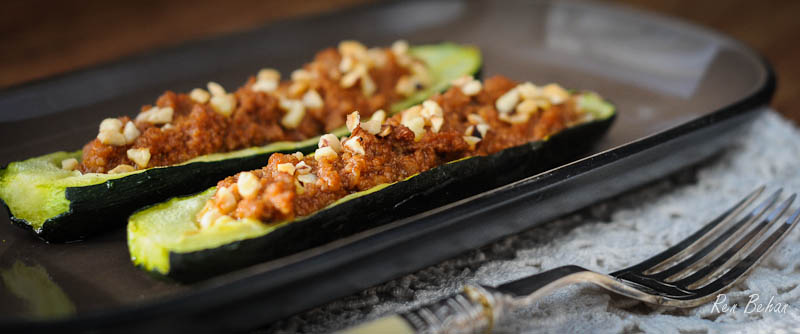
I am enjoying the simplicity of eating the Paleo way, surprisingly, meals are not any harder to cook or plan. The children are still eating as before, but I have noticed that we are all eating more fruit and veg as a family. Most importantly, I’m managing not to eat their leftovers, or snack on chocolate, or sip countless lattes throughout the day. I am looking forward to getting to Day 30 and to re-introducing some things back in, such as organic milk, but there is no doubt that some of the new habits I have gained will stay. I will be allowing myself chocolate and cake again, life is too short to completely deprive yourself of everything, but I hope not to be led by cravings for sweet foods and instead, to consider them a treat.
I am sleeping more soundly and have a clearer head. I also feel like I am on more of an even keel, nothing really bothers me so much, even running late in the morning, which is a pet hate. In fact, I’m waking up earlier and getting more things done before the children wake up. I have clearer skin and sharper taste buds. Even the pear I ate this morning tasted almost too sweet. Although this plan is clearly restrictive, it is strangely liberating not to be sugar-dependent and there is lots that I can eat, including fruit and veg, which makes The Whole 30 feel like a healthy thing to be doing.
I’m just about to try making Cauliflower Fried Rice, based on a recipe in Well Fed, and I also have a slow cooker Bolognese (Paleo-friendly) recipe to share soon, too.
Here’s a re-cap on some of the useful resources I’ve come across –
Books
It Starts With Food – By Dallas & Melissa Hertwig creators of the Whole 30 plan
Well Fed, Paleo Recipes – by Melissa Joulwan (Whole 30 approved)
Websites
Whole 9, which includes the Whole 30 Plan and free PDF’s
The Clothes Make The Girl (Mellisa Joulwan’s blog
UK-based Cucina Ceri
Nom Nom Paleo – great recipes by Michelle
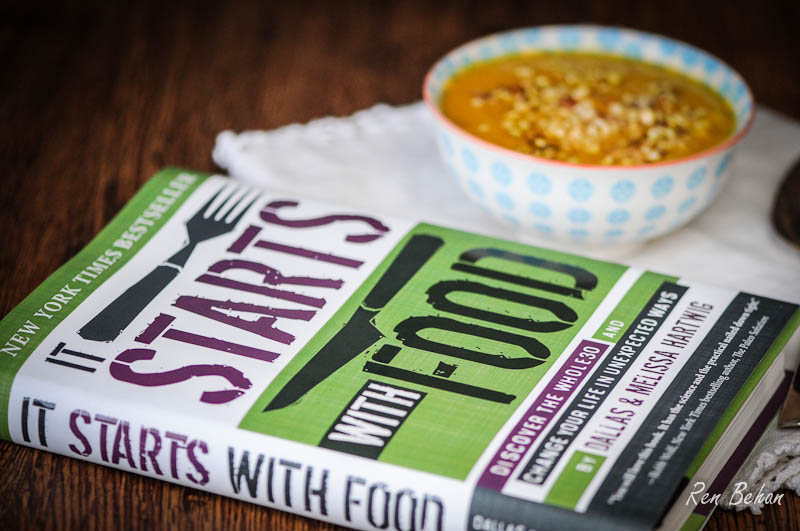
Butternut, Coconut and Hazelnut Soup – Paleo Friendly – find my recipe here
Review – (Cookbook) Well Fed, Recipes for people who love to eat
Well Fed, Paleo Recipes for people who love to eat, is written by Melissa Joulwan with photography by David Humphreys. The cookbook is based on a Paleo eating plan, also referred to as the Paleo Diet, Caveman Diet, Prima, Real Food and Paleo Lifestyle. There is a simple to follow ‘No’ list, including processed foods, grains, legumes, soy, sugar, dairy, alcohol, white potatoes and vegetable oils. This is based on the idea that we should eat the foods that make us healthiest. On the ‘Yes’ list are animal-based protein, vegetables, fruit and natural fat sources. Some people eat this way 100% of the time, or as much of the time as they can, others chose to follow a 30-day elimination program such as The Whole 30, before re-introducing certain things back into their diet, whilst noting the effect on their system.
The point of a Paleo eating plan is that by removing inflammatory foods from our diets, and by eating ‘real food’ we reduce our risk of “diseases of civilization,” such as heart disease, diabetes and cancers. Added to that, Melissa says, “our energy levels are better, we look years youngers and we enjoy life more.” So far, I’d agree with her!
Inside, there are sections on The Paleo Kitchen, including Weekly Cook Up ideas, Your Paleo Pantry, Recipes, Meal Ideas, Sauces and Seasoning, Protein, Veggies and Salads, Fruits, and a Resources section. The recipes are very simple to follow, and include Moroccan Meatballs, Cinnamon Beef Stew, Rogan Josh, and BBQ Pork (Cauliflower) Fried Rice.
It would only really be worth buying this book if you are trying a Paleo way of eating, or are taking part in The Whole 30 challenge. I’ve certainly picked up some great ideas from the book, but mainly around making sauces, seasoning and flavourings to keep things interesting rather than any new cooking techniques or groundbreaking recipes. That being said, the cauliflower fried rice idea was a new one to me and I have been introduced to some interesting alternatives, such as coconut aminos, in place of soy sauce. There are plenty of recipes that you can slow cook, or prepare in advance, to keep on top of things.
There is no specific section on breakfast because Paleo eaters oftens just eat the same food for breakfast as they would the rest of the day, such as grilled chicken and vegetables, but I would have liked to have seen a few breakfast ideas in here for better value for money.
(Own copy, bought from Amazon.com RRP $29.95, I purchased mine for $18.94 which came to £20.32) but it is available on Amazon.co.uk, too for around the same price.)
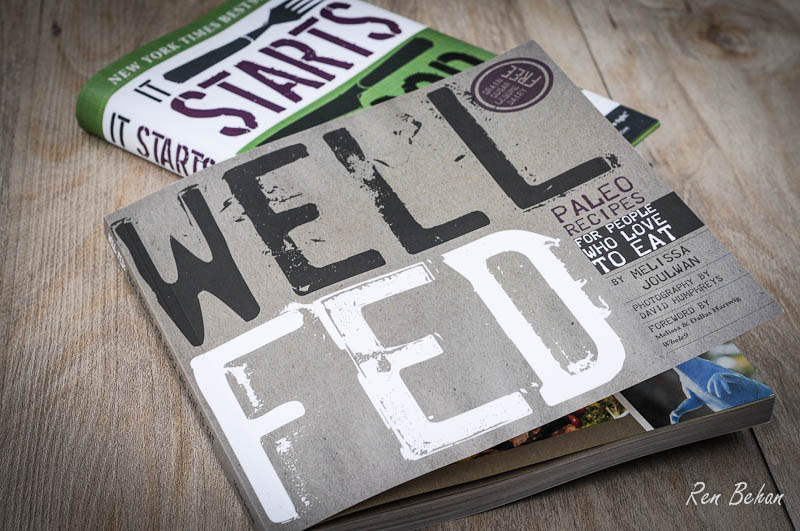
I really hope I haven’t bored you with my healthy eating update, I am pleased as punch that I’m half way through.
Just think, it’s Shrove Tuesday soon and Valentine’s Day and I am looking forward to sharing some treats, too!

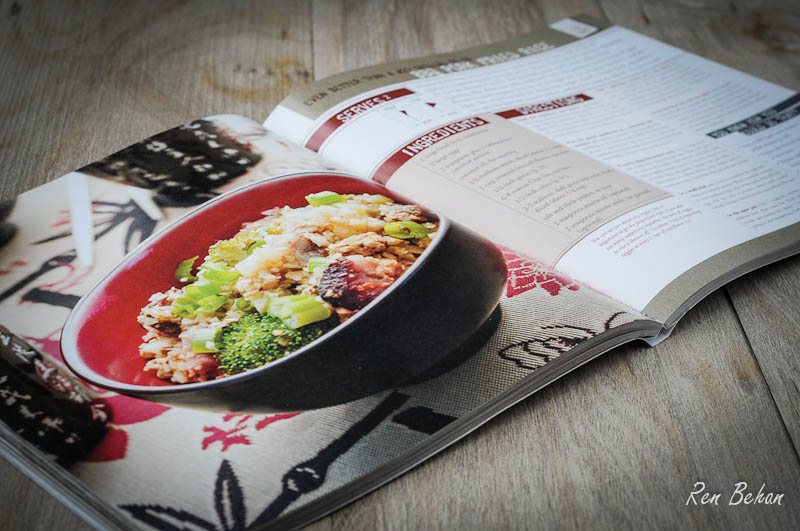
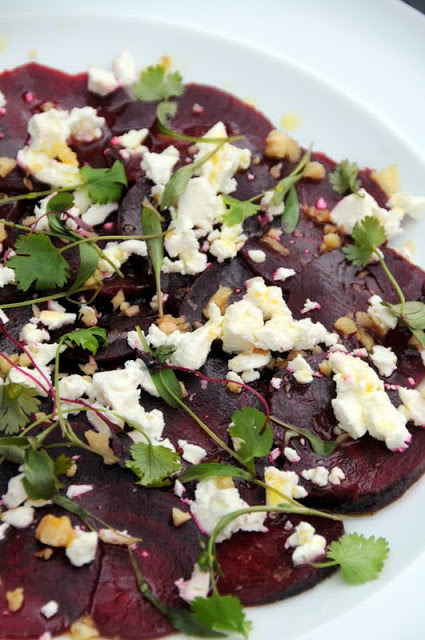
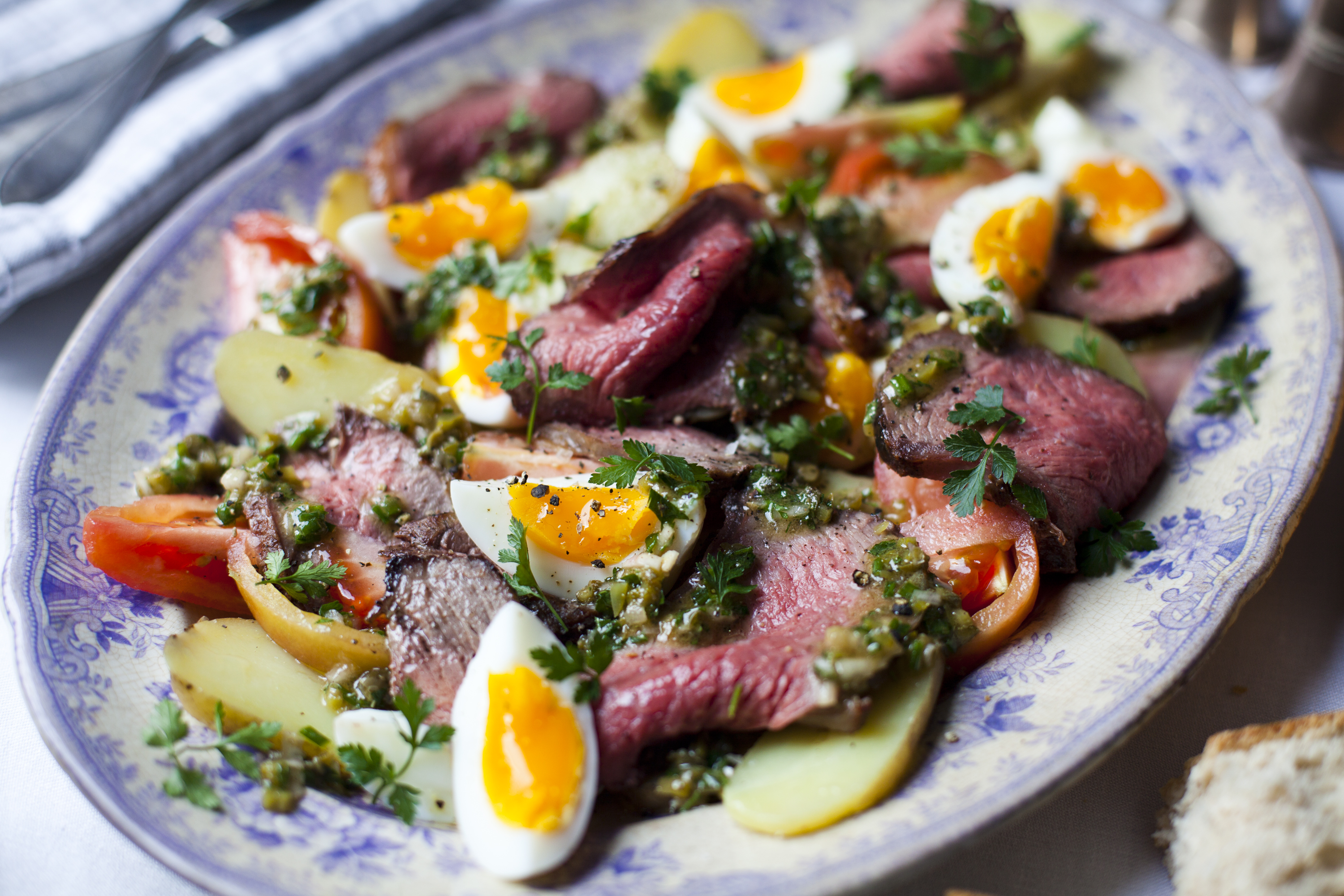
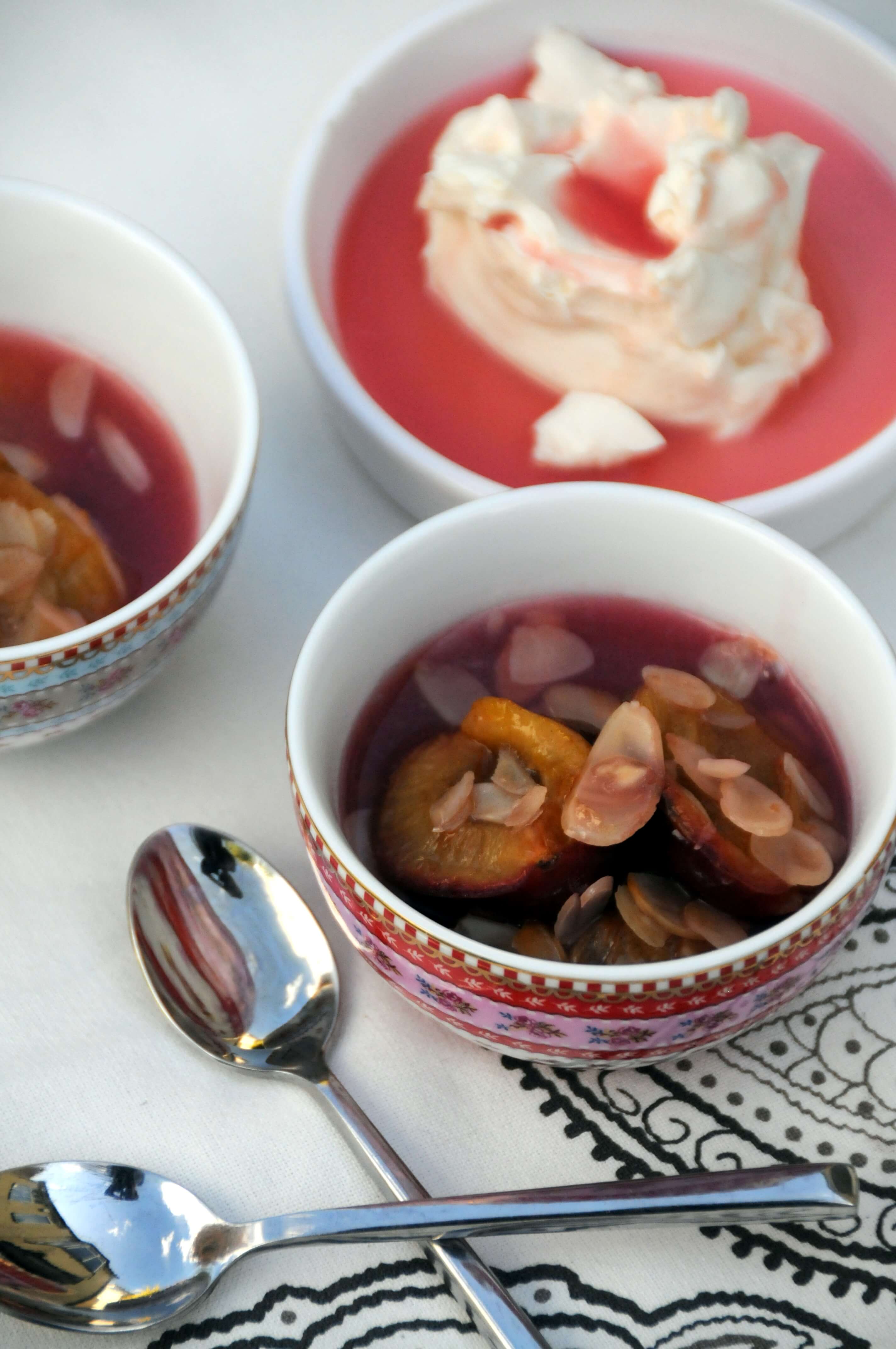
Can you be more specific about the content of your article? After reading it, I still have some doubts. Hope you can help me.
admission essays essay for college scholarship where to buy a research paper online
Pretty component of content. I simply stumbled upon your site
and in accession capital to assert that I get in fact loved account your blog posts.
Anyway I will be subscribing for your augment or even I
success you get admission to constantly rapidly.
Greetings! I know this is somewhat off topic but I was wondering which blog platform are you using for this site?
I’m getting tired of WordPress because I’ve had problems with
hackers and I’m looking at options for another platform.
I would be great if you could point me in the direction of a good platform.
Why not promote a local enterprise by utilising a nearby removals business.
Why not promote local businesses by making use of a local ‘man
and his van’ to shift the bulky packing cases.
If only people could appreciate how dangerous gas boilers can be.
A yearly gas safety check would save lives.
I have to thank you for the efforts you have put in penning
this blog. I really hope to check out the same high-grade content from you in
the future as well. In truth, your creative writing abilities has inspired me to get my very own website now 😉
Hi Ren – don’t you miss a nice glass of wine at the weekend?!
Very interested in this. I did a very strict carb free thing for 2 wks a few years ago on the advice of my chiropractor and it definitely had an effect. I was allowed to eat eggs though.
What’s the thinking behind the grass fed meat and how do you know if your meat was grass fed or not? Is organic meat generally grass fed – as opposed to soy I presume? I didn’t think chicken could be grass fed, don’t they eat corn anyway?
Yes, you can eat eggs on this plan, too! And sweet potatoes which makes life a little easier as you can have a baked sweet potato with some good quality protein and lots of veg and you don’t really miss out on anything. I regularly make sweet potato and salmon traybakes with veggies so that’s no different to normal. For breakfast I eat a scrambled eggs or boiled egg or fruit or even leftover supper!
Grass-fed meat is better for you – less antio-biotics and hormones. To be honest, after the latest processed food scare I have switched to mainly organic meat now or no meat at all! Organic is usually greas-fed = outdoor rearer etc. Chicken should be organic etc
Lots of people misunderstand the organic / grass fed labels. The quick answer is:
Grass fed animal or bird meat has a better fat profile, specifically more Omega 3 fats. Eggs from grass fed birds also have more Omega 3, and generally have a strong orange colored yolk. Dairy products from grass fed cows are also better.
Organic meat, milk and eggs are from animals that have not been treated with antibiotics, pesticides, miticides etc and have eaten only organically produced feed.
You can have any combination of the two, e.g. grass fed, non-organic; grass fed, organic; grain fed, non-organic; grain fed, organic. Clearly the preferred option is grass fed, organic.
kind thoughts to all
Sorry – spell check changed my comment …rely on
Enjoyed this post although not a fan of restrictive diets – just think that cooking with simple ingredients from scratch, avoiding processed food and eating more fruit and veg is sensible. The legume issue bothered me too – I really on them for my vegetarian daughter as they are a valuable second class protein.
You are right Sally and in fact, that’s exactly it, lots of fresh, unprocessed food is the best way forward. This is just a 30-day re-set. This plan is super difficult for vegetarians, I’d say, though the book does leave it up to you how strictly to take the legume rule!
Great to hear you’re enjoying the challenge and doing so well. It also took me ages to understand about legumes (yes it is all to do with the gut, and anti-absorption of minerals) I was like ‘I want my houmous!’ I really don’t care for beans – but chickpeas… Anyway I have a 80/20 rule so do allow things like this every now and again. You’re right it is all about balance.
Thanks Ceri, I think when I start adding things back in, it will be legumes first! Although I had an amazing beetroot houmous yesterday made with fresh beetroot and cashew nuts and it was delicious. Also, baba ganoush made with aubergines is a nice alternative.
Well done Ren, you are doing really well. I am happy sticking to my 5:2, but I really do need to drink more water as my skin is dry at the moment.
Thanks Jac, very impressed with you all sticking to the 5:2 and I noted a new book out on that, too!
Well done for sticking with it so well, Ren. Glad to hear it is working!
Thank you Mark! Eating tons of veggies!!!
An interesting read – I did Whole 30 just before Christmas and loved the way it made me feel, especially the way I felt in control of my sweet cravings! Jeanne, I agree with you re the legumes – we could not understand it! I think perhaps it is because they contain sugar and since part of the idea with the diet is to deal with sugar cravings they are excluded (they also suggest you avoid fruit). We’ve introduced dairy and legumes since completing, far more balanced in my eyes, and we still enjoy “naughty” treats when we want.
Hi Caryn, glad to hear you completed the Whole 30 and found it useful! I think it is interesting, the whole thing, and I don’t think anyone would be Whole 30 compliant 100% of the time. Glad to hear you have reintroduced some things which I agree, makes it more balanced on the whole. I can’t get over the energy and the clear headedness!
Interesting & thoughtful post – and I admire your fortitude! But I need somebody to explain to me why legumes are on the No list if the point is to avoid the “diseases of civilasation” such as heart disease, diabetes and cancers. Lentils and chickpeas are not, as far as I am aware, a major contributing factor to any of these diseases? Not in any way a criticism of the post! But more something that has seriously puzzled me ever since I first read about this diet. Hope you have a great weekend!
Hi Jeanne, it bothers me too, since I love legumes and they are a vegetable, right?! In the book I read, It Starts With Food, it explains that legumes have a lot in common with grains.Legumes include beans, peas, lentils and peanuts. “The silimarlity starts with the seed. The seeds of legumes, like the seeds from cereal grains, store a large amount of energy in the form of carbohydrate. In most legumes, the amount of carbohydrate present is double or triple of protein.”
Whilst carbohydates aren’t banned (you can eat every other type of veg, other than white potatoes – very low nutritional value) the basic premise with legumes is that, eating large amounts of carbohydrate dense foods leads to the same road as eating other carbs – they cause overconsumption. Apparently they also contain high levels of phytate making them less micro-nutrient dense than other types of vegetables. But hey, I’m not the legume police and I will be eating them again after the 30 days. The point of the 30 day plan is to re-set your gut, so that you don’t have the health issues associated with eating processed foods. Green beans are ok, incidentally, because they are more like a plant than a seed/grain.